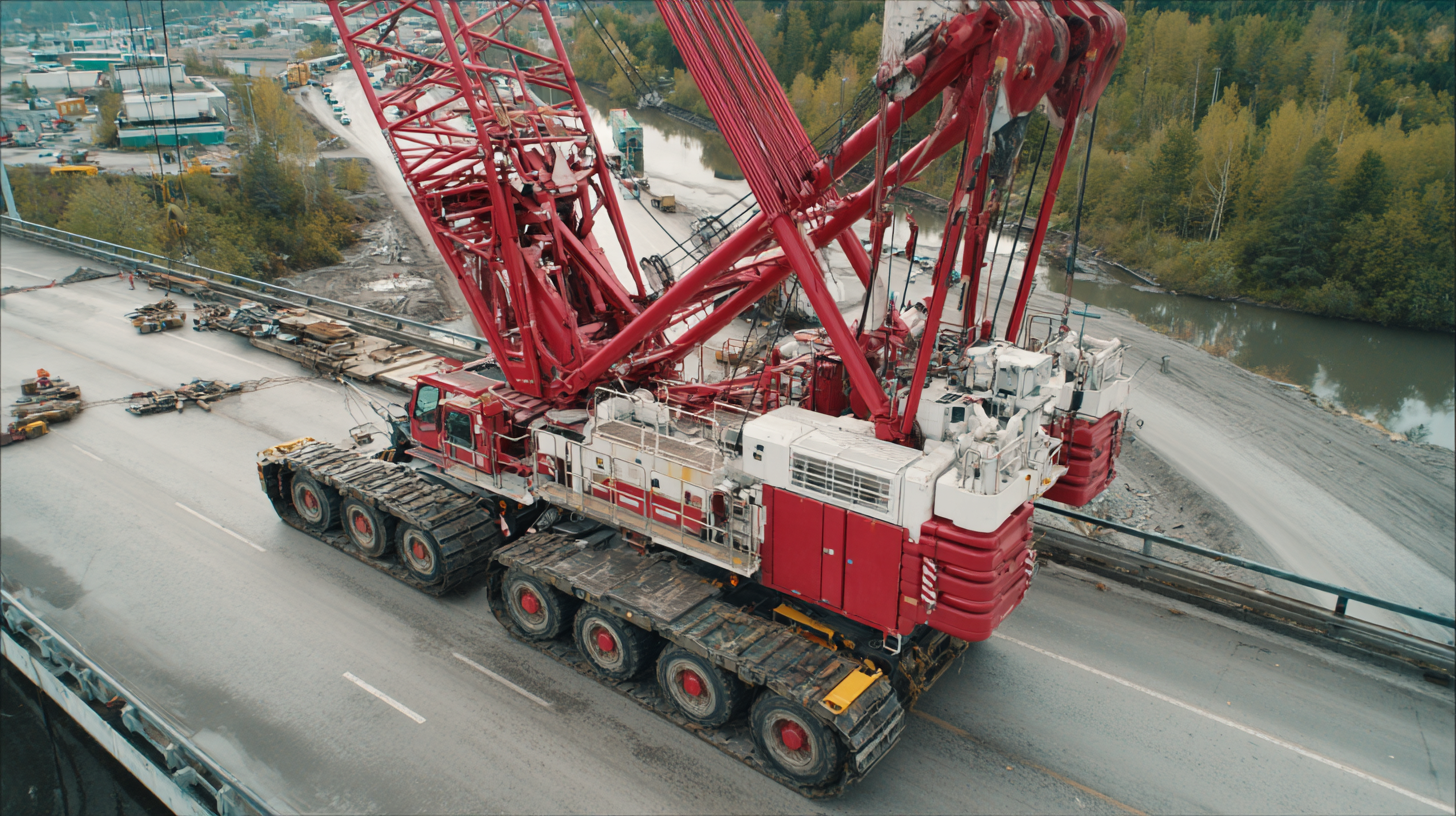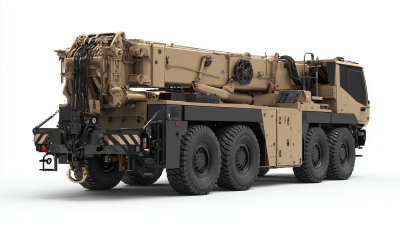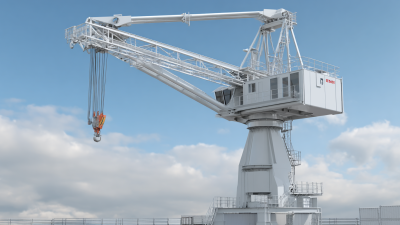Leave Your Message
-
Phone
-
E-mail
-
WhatsApp
In the ever-evolving construction industry, the pursuit of efficiency is paramount, particularly in heavy lifting operations where precision and safety are crucial. Advanced towing crane technologies have emerged as a game-changer, offering innovative solutions that enhance productivity while minimizing risks associated with heavy lifting. These modern towing cranes combine strength with sophistication, enabling construction teams to perform complex lifting tasks with ease and reliability. By integrating automation and smart controls, these systems not only optimize the movement of materials but also streamline workflow, resulting in significant time and cost savings. This guide explores how to leverage these advanced towing crane technologies, providing insights into their benefits, operational strategies, and best practices for implementation, ultimately unlocking new levels of efficiency in construction projects.

Advanced towing crane technologies are revolutionizing heavy lifting operations in the construction industry by enhancing efficiency and safety. One of the key advantages of these technologies is their ability to handle substantial loads with precision. This is particularly crucial when working with oversized materials or delicate structures, as advanced cranes can maneuver heavy objects into position with minimal risk of damage. The implementation of sophisticated control systems and real-time monitoring further ensures that operators can execute lifts with a high degree of accuracy.
Moreover, the use of advanced towing cranes significantly reduces the time required for lifting tasks. These cranes often feature automated controls and improved hydraulic systems, which streamline the lifting process and allow for quick repositioning. This not only accelerates project timelines but also minimizes labor costs, as fewer operators are needed to manage complex lifts. Enhanced mobility and compact designs mean that these cranes can access tight spaces and perform lifts in challenging environments, ultimately leading to increased productivity on job sites.
Modern towing cranes are revolutionizing heavy lifting operations in the construction industry by incorporating advanced technologies that enhance efficiency and productivity. One of the key features of these cranes is their enhanced load management systems, which utilize real-time data analytics to optimize lifting processes. According to the International Journal of Engineering Research and Applications, cranes equipped with smart technology can reduce operational downtime by approximately 25%, significantly contributing to project timelines and cost savings.
Additionally, modern towing cranes prioritize safety through advanced monitoring systems and load limit sensors. These technologies help prevent overloads, thereby reducing the risk of accidents and equipment failures. A report by the Construction Industry Institute indicates that incorporating such safety features can lead to a 40% decrease in job site injuries, making operations not only more efficient but also safer for the workforce. The integration of automation and telematics in towing cranes further facilitates remote monitoring and diagnostics, allowing operators to respond swiftly to any potential issues during lifting operations, emphasizing the critical role these innovations play in enhancing overall operational efficiency.
| Feature | Description | Benefits |
|---|---|---|
| Load Capacity | High capacity ranging from 10 tons to 100 tons | Allows for lifting of heavyweight loads, increasing operational capabilities |
| Telematics Integration | Real-time monitoring and data analytics | Enhances operational efficiency and safety through analytics-driven decisions |
| Modular Design | Easily customizable configurations | Facilitates quick adaptations to various lifting needs |
| Energy Efficiency | Utilizes advanced hydraulic and electric systems | Reduces fuel costs and minimizes environmental impact |
| Safety Features | Includes overload sensors and emergency stop features | Protects operators and minimizes the risk of accidents |
| Remote Operation | Allows for safe maneuvering from a distance | Enhances operator safety and situational awareness |
The evolution of towing crane technologies is pivotal for enhancing efficiency in heavy lifting operations within the construction industry. A comparative analysis reveals significant differences between traditional crane systems and advanced towing crane technologies. Traditional cranes are limited by their mechanical constraints and operational speed, often resulting in downtime and increased labor costs. In contrast, advanced towing crane systems leverage modern materials and automation to improve load handling and reduce operational delays. For instance, research indicates that advanced systems can decrease lifting times by up to 30%, optimizing workflow and project timelines.
Moreover, when examining the capabilities of modern towing crane technologies, the focus shifts to their enhanced performance metrics. Advanced systems typically feature improved towing capacities, with some models capable of lifting over 100 tons, whereas traditional setups struggle to exceed 50 tons. Additionally, safety standards in advanced technologies have seen significant upgrades, aligning with industry reports that suggest a 20% decrease in workplace accidents associated with their use. These innovations underscore the strategic shift towards integrating advanced towing systems to meet the growing demands for efficient, safe, and reliable heavy lifting in construction projects.
In the construction industry, safety remains a top priority, particularly in heavy lifting operations. The introduction of advanced towing crane technologies significantly enhances safety measures, providing operators with more control and precision. Updated safety features such as improved load monitoring systems and advanced stabilization mechanisms can prevent accidents and ensure a safe working environment for all personnel involved.

Recent developments within the industry, such as the expansion of fleet capabilities by key players, underscore the trend towards safer and more efficient operations. The delivery of the latest all-terrain cranes is evidence of this shift, as these vehicles are designed not only for heavy lifting but also come equipped with the latest safety enhancements. By leveraging cutting-edge technology in towing cranes, companies can mitigate risks associated with heavy lifting while optimizing productivity on job sites.
This dual focus on safety and efficiency is likely to shape the future of construction operations.
The construction industry is on the brink of a technological revolution, significantly driven by advanced towing crane technologies aimed at enhancing efficiency in heavy lifting operations. Data from the Global Construction Machinery Market Report suggests that the adoption of next-generation towing cranes, including electric and hybrid models, can improve energy efficiency by up to 30% compared to traditional diesel-powered cranes. This shift not only reduces emissions but also aligns with the industry’s growing commitment to sustainability.
Future trends indicate an increasing integration of smart technologies in towing cranes, such as IoT and AI capabilities, which can facilitate real-time monitoring and predictive maintenance. According to a McKinsey report, projects that adopt IoT solutions can achieve productivity improvements of up to 15%. These technologies enable construction managers to optimize crane deployment, ensuring that heavy lifting operations are executed with precision and minimal downtime.
**Tip:** To maximize the benefits of advanced towing crane technologies, consider investing in staff training to ensure your team is capable of leveraging active monitoring tools and handling automated systems effectively. Additionally, regular maintenance schedules driven by predictive analytics can further enhance equipment longevity and performance.







